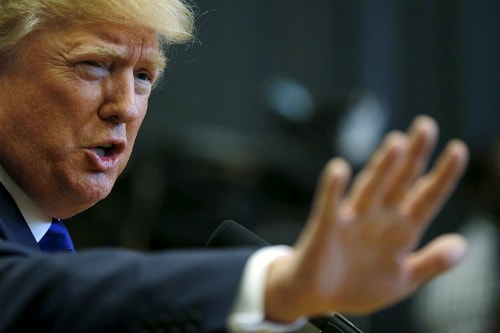US announced withdrawal from TPP
Immediately after the inauguration of President Donald Trump, the administration of President Donald Trump issued a statement on trade strategy to protect American jobs, starting with withdrawing from the Trans-Pacific Partnership Agreement (TPP).
The White House said that with years of negotiating experience, the President understands the importance of putting the interests of American workers and businesses first on trade issues. Therefore, with "tough and fair" international trade agreements, it can boost the US economy and bring millions of jobs.
"This strategy will start by withdrawing from the TPP and ensuring all future trade agreements serve the interests of American workers," the statement said.
 |
Mr. Trump quickly fulfilled his promise to "say no" to the TPP right after taking office. Photo: Reuters |
Mr. Trump will also renegotiate the North American Free Trade Agreement (NAFTA), signed in 1994 between the United States, Canada, and Mexico. If these countries refuse to renegotiate to give American workers a fair deal, "the President will issue a notice of withdrawal from NAFTA."
The White House also affirmed that the US will not be lenient with countries that violate trade agreements and harm American workers in the process.
“Americans have long been forced to accept trade agreements that put the interests of insiders and Washington elites above the working class. As a result, cities have seen factories close and good-paying jobs shipped overseas, while the United States faces massive budget deficits and a crippled manufacturing base,” the statement said.
The US signed the TPP agreement last year but has yet to ratify it. The TPP is the economic pillar of the Barack Obama administration’s pivot to Asia-Pacific, as China’s power rapidly grows. Supporters of the agreement fear that withdrawing from the TPP could push power in the region back to China, at the expense of the US. Mr. Trump has repeatedly criticized China’s trade policies and threatened to impose import tariffs on Chinese goods.
Negotiations ended in October 2015 after 5 years of construction, TPP is considered a historic free trade agreement with the participation of 12 countries:United States, Vietnam, Australia, Brunei, Canada, Chile, Japan, Malaysia, Mexico, New Zealand, Peru and Singapore.
After this event, countries began the process of legal review and approval in parliament to be able to implement in 2018. However, this process has encountered many obstacles, the most significant of which is the presidential election in the US - where both candidates, Mr. Trump and Mrs. Clinton, did not support. The remaining members of the TPP, especially Japan, have made efforts to save it. However, with the new US administration announcing its withdrawal from the agreement, countries will have to face the choice of further negotiations on a TPP without the US, or let this agreement collapse.
According to VNE
| RELATED NEWS |
|---|

